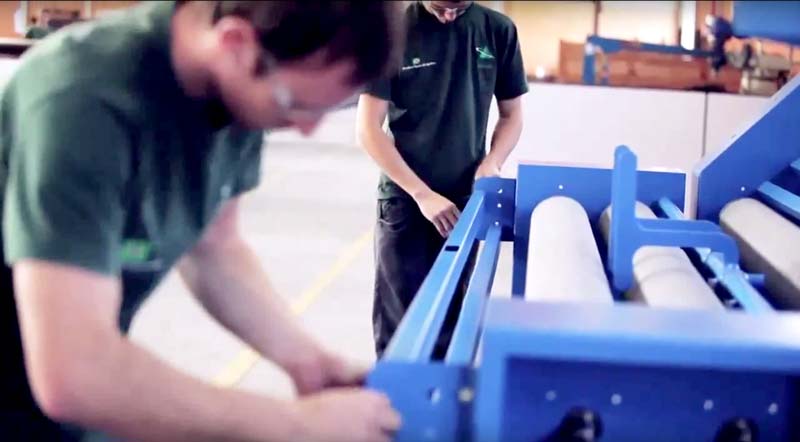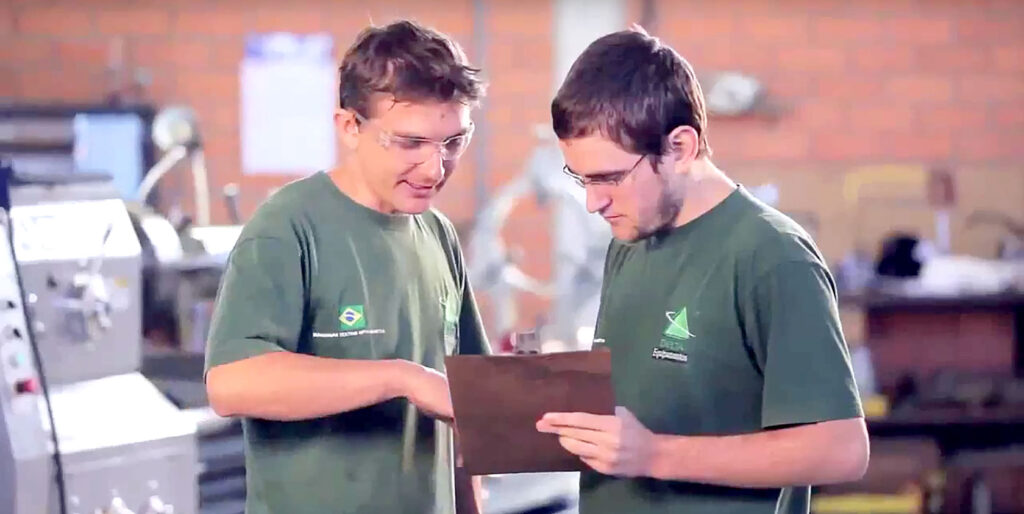Industrial maintenance is a basic need for any factory or industry. Therefore, it is essential to the textile industry. It is what will guarantee production without losses due to stoppages and expenses with unexpected repairs.
A industrial maintenence textile It is also crucial to improving productivity, the quality of what is produced, and offering greater security to a company’s employees.
However, to carry out industrial and textile maintenance, it is necessary to plan the actions that will be carried out for this purpose.
So learn How to create your planning industrial maintenence textile, or more precisely, the Maintenance Planning and Control (PCM) of your industry.
What is a PCM?
Maintenance Planning and Control (PCM) is a set of strategies and actions that aim to avoid problems, correct deviations and improve production.
Through industrial textile maintenance supported by PCM, it is possible to collect, study, adjust and propagate information used by all sectors of an industry.
Having a good tool for Maintenance Planning and Control is, therefore, essential. Through it, it is easier to monitor and control compliance with some PCM goals:
- Prepare
- Schedule
- Evaluate results of textile industrial maintenance services
- Allow comparison of results obtained with pre-established values
- Adopt measures to correct observed deviations
+ Find out more: How to define the maintenance schedule for textile machinery?
Building Textile Industrial Maintenance Planning and Control
The PCM is vital to equipment maintenance. It is the planning that will give rise to a Standard Operating Procedure (PO) containing the tasks necessary for industrial maintenenceof your company.

The recommendation is that this list of obligations be recorded in a Training Manual (MT). It is also advisable that both the PO and the MT are prepared in groups.
Ideally, a representative of the PCM, the person responsible for the industrial maintenence textile and equipment operators participate in this construction.
The step-by-step guide to a well-designed PCM
First of all, the industrial maintenence textile it should focus on being preventative rather than reactive. To see why this concern is essential, read this other article: Why is textile preventative maintenance important?
It mentions some specific reasons to prevent problems, instead of paralyzing the production line. For example:
- Keep equipment running productively
- Extend the useful life of physical assets
- Strengthen the safety of your employees
- Achieve energy efficiency with the installation and operation of equipment
- Avoid major and expensive repairs
Aware of the vision about industrial maintenence that you need to adopt, it is time to understand that a Maintenance Planning and Control depends on constant adjustments.

The need for adaptations will arise according to the characteristics of your production line and industry as a whole.
In general, the basic procedures for developing an effective PCM capable of meeting the particularities of your textile industry can be structured as follows:
1-Do a data investigation
The first task is to inventory all machines in operation. Find information such as: previous parts exchange and number of actions that have already been carried out.
Take note of the occurrences that are most repeated in the long term and note which equipment cannot be stopped, as they are essential to the production cycle.
This data will point to the priorities of your PCM’s technical calls. More than that, they will indicate where to start a recovery procedure. industrial maintenence textile in case of problems.
Start by considering the past year (12 months). From there, you’ll be able to list which machines will be the first to receive maintenance.
The analysis of collected data should be constant to perceive patterns: at what time interval it’s important to lubricate a machine or replace a part.
2- Create the Operational Procedure (OP)
The routine of checking the state of each equipment after undergoing the initial maintenance should be outlined in the Operational Procedure (OP). Regardless of whether the work was preventive or corrective.
This continuity provides reliable information about each piece of equipment and improves production quality. Furthermore, it ensures that all maintenance activities are up to date.
Your PCM Operating Procedure will contain checks such as:
- Electrical checklist: Investigation of all electrical components of the equipment, with a thorough evaluation of panels, power cables and sources.
- Lubrication checklist: The goal is to determine whether all components were properly lubricated and products were packaged in the appropriate containers.
- Safety Checklist: Checks compliance with all safety standards, taking care not to leave any material that poses a risk to people or the machine.
- Mechanical Checklist: Checking cables, belts, hoses and all equipment parts.
To avoid confusion and possible errors in Maintenance Planning and Control, each stage of investigation must be photographed and captioned.
3- Make a financial budget
Now is the time to budget your planning and the costs you will incur with the industrial maintenence textile.
Include here all the investments you will need to make to execute the project. These include management software, hiring professionals, materials and parts.
If you don’t even know where to start, follow this order:
- Team required to perform maintenance activities
- Materials for repairing possible machines
- Labor benefits
- Software used in project control
At this point in planning, it is essential to be careful not to increase costs by trying to reduce costs.
A common example is buying cheaper and poor quality parts, which will result in even greater problems and losses in the future.
The main investment at this stage should be in employee training. Their commitment is essential for the industrial maintenence textile, and the use of equipment in the production process, occurs appropriately.
4. Set deadlines
Approved the planning and budget, determine the frequency of each maintenance.
One tip is to divide the number of times each review should occur by the number of employees who will perform the services.
This equation will result in an average of how many maintenance sessions each equipment will have during a year, and how many professionals will be required.
Allocate a greater number of revisions for machines that have been in use for a longer time.
To better understand how to schedule this service within your industry or factory, visit: How to define the maintenance calendar for textile machinery?
5- Control the services performed
Monitor each of the services that are performed. This approach prevents potential failures.
It’s also ideal to create a report for each checklist, including photos, captions, arrival and departure times, and the level of quality achieved.
This document can also include observations about signs of problems or errors that your industry’s equipment may present.
The data will be easily obtained in a conversation with professionals in the industrial maintenancebold textile

6- Constantly compare indicators
To be sure that the Maintenance Planning and Control (PCM) is going as it should, it is necessary to compare results.
There are performance indicators that deserve full attention. If they are not being affected, it may be necessary to adjust the PCM.
The guide to the main indicators, called Key Performance Indicator (KPI’s) or Key Performance Indicators, in Portuguese, includes:
- Average service time
- Interval between repairs
- Profitability per machine
- Compliance with the schedule
Developing the PCM is a bit laborious, but the advantages of having it in the development process industrial maintenence textiles make all your efforts worth it.
It eliminates the lack of information about what to do, allows you to evaluate deviations and adopt corrective measures. In addition to making performers more efficient.
There are several tools and methodologies for PCM to be efficient and guarantee good results. With this in mind, we developed a ptextile industrial maintenance sheet, to facilitate and optimize the maintenance management of your factory, check it out.




